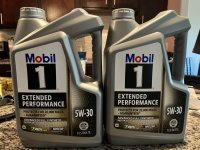OVERKILL
$100 Site Donor 2021
Group III is more than capable of handling extended drains, its oxidation resistance isn't much worse than PAO, where PAO has a significant advantage is cold temperature performance.Their marketing is poo. They aren't making the argument for oil that doesn't oxidize and controls sludge extremely well. IMO that has been the real magic of M1 Full Synthetic (the old school poa/poe). So many more engines fail because of sludge and deposits clogging something or freezing the piston control rings.
If a gp-III has a theoretically better wear package or can uses better wear modifiers or whatever i think its irrelevant. All motor oil can prevent enough wear to last an engine to extremely high mileage. The deposits and sludge will kill it way sooner if you let your motor oil turn to sludge, varnish or deposits.
When Mobil reformulated M1 0W-40 with VISOM (their proprietary Group III product) there was only a slight hit to one of the tests, and the results were still MASSIVELY better than your market general synthetic. The reason being is that there's significantly more to an oil's performance than just the base oil blend.
Oils are a balancing act, and, for most doing that act, making the most money is a big component. The API limits don't set the bar all that high and so you aren't going to see products targeting Joe Average being formulated for the best possible performance, cost be ****ed. This is also why the majors have tiers of products that are all approved, but clearly ratchet up the level of performance offered and the price commensurately.


